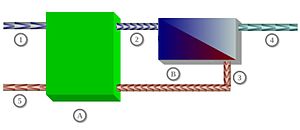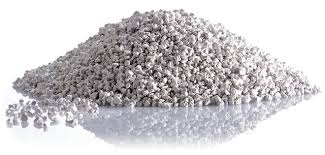

What is Desalination?
Areas that have either no or limited surface water or groundwater may choose to desalinate water. Reverse osmosis is an increasingly common method of desalination, because of its relatively low energy consumption.In recent years, energy consumption has dropped to around 2 kWh/m3 with the development of more efficient energy recovery devices and improved membrane materials. According to the International Desalination Association, for 2011, reverse osmosis was used in 66% of installed desalination capacity (0.0445 of 0.0674 km³/day), and nearly all new plants. Other plants mainly use thermal distillation methods: multiple-effect distillation and multi-stage flash.
Sea water RO desalination process has been commercially used since 1970s. Energy requirement is low comparison to other processes of desalination such as 2,2 kWh/m3. Up to %50 of the seawater input can be recovered as fresh water.

Typical SWRO System consists of;
Pretreatment
Pretreatment is important when working with reverse osmosis membranes due to the nature of their spiral wound design. For SWRO pretreatment has four major components.
High Pressure Pump
The high pressure pump supplies the pressure needed to push water through the membranes, even as the membrane rejects the passage of salt through it. For SWRO system pressure required is changing from 30 bar to 80 bars.

Membrane Assembly
The membrane assembly consists of a pressure vessel with a membrane that allows feed water to be pressed against it. The membrane must be strong enough to withstand whatever pressure is applied against it. Reverse osmosis membranes are made in a variety of con figurations, with the two most common configurations being spiral-wound and hollow-fiber.Only a part of the saline feed water pumped into the membrane assembly passes through the membrane with the salt removed. The remaining "concentrate" flow passes along the saline side of the membrane to flush away the concentrated salt solution.
The percentage of desalinated water produced versus the saline water feed flow is known as the "recovery ratio".This varies with the salinity of the feed water and the system design parameters: typically 20% for small seawater systems, 40% – 50% for larger seawater systems, and 80% – 85% for brackish water.
The concentrate flow is at typically only 3 bar / 50 psi less than the feed pressure, and thus still carries much of the high pressure pump input energy.
Energy Recovery
Energy recovery can reduce energy consumption by 50% or more. Much of the high pressure pump input energy can be recovered from the concentrate flow, and the increasing efficiency of energy recovery devices has greatly reduced the energy needs of reverse osmosis desalination. Devices used, in order of invention, are:


1: Sea water inflow,
2: Fresh water flow (40%),
3: Concentrate flow (60%),
4: Sea water flow (60%),
5: Concentrate (drain),
A: Pump flow (40%),
B: Circulation pump,
C: Osmosis unit with membrane,
D: Pressure exchanger
Energy recovery pump: a reciprocating piston pump having the pressurized concentrate flow applied to one side of each piston to help drive the membrane feed flow from the opposite side. These are the simplest energy recovery devices to apply, combining the high pressure pump and energy recovery in a single self-regulating unit. These are widely used on smaller low-energy systems. They are capable of 3 kWh/m3 or less energy consumption.

Schematic of a reverse osmosis system using an energy recovery pump;
1 : Sea water inflow (100%, 1 bar)
2: Sea water flow (100%, 50 bar)
3: Concentrate flow (60%, 48 bar)
4: Fresh water flow (40%, 1 bar)
5: Concentrate to drain (60%,1 bar)
A: Pressure recovery pump
B: Osmosis unit with membrane
Batch operation: Reverse osmosis systems run with a fixed volume of fluid (thermodynamically a closed system) do not suffer from wasted energy in the brine stream, as the energy to pressurize a virtually incompressible fluid (water) is negligible.Such systems have the potential to reach second law efficiencies of 60%.

Remineralisation and pH adjustment
The desalinated water is "stabilized" to protect downstream pipelines and storage, usually by adding lime or caustic soda to prevent corrosion of concrete-lined surfaces. Liming material is used to adjust pH between 6.8 and 8.1 to meet the potable water specifications, primarily for effective disinfection and for corrosion control.
Remineralisation may be needed to replace minerals removed from the water by desalination. Although this process has proved to be costly and not very convenient if it is intended to meet mineral demand by humans and plants. The very same mineral demand that freshwater sources provided previously.
Disinfection
The desalinated water is finally disinfected before the final storage tank or just after the storage tank. Ultraviolet disinfection shall be used for disinfection for better quality. As an alternative NaOCl dosing is used for disinfection.
STANDART SEA WATER REVERSE OSMOSIS SYSTEMS
| STANDART MODELS | Raw Water TDS > 35.000 | # of Membranes |
|---|---|---|
| 100 m3/day | 8 | |
| 200 m3/day | 16 | |
| 300 m3/day | 24 | |
| 400 m3/day | 30 | |
| 500 m3/day | 36 | |
| 1000 m3/day | 72 |